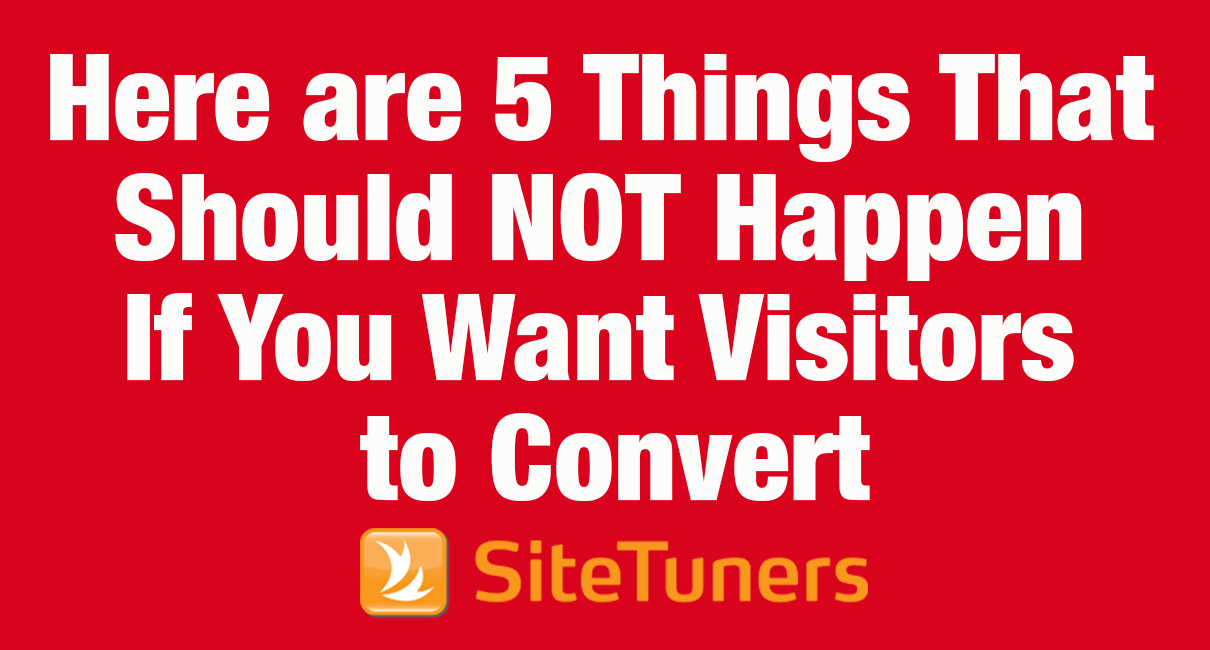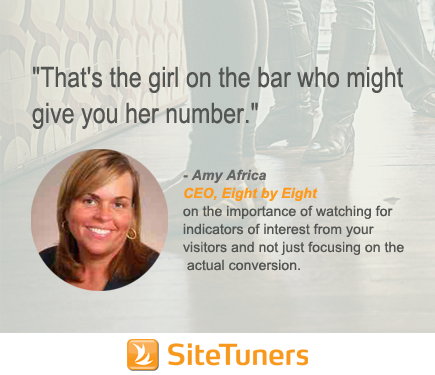
Amy says that online, people tend to do the same thing – they behave a specific way when they have propensity to buy. She can now gauge with 92% accuracy whether or not a customer will complete a transaction based on the position of their feet or how their hands are poised over the keyboard.
In an episode of Landing Page Optimization, Amy takes us through what she’s learned from research. She talks about common things that marketers miss that lead to poor conversions.
1. Unmatched intent
People take in and comprehend very little of a page. So, two things that will make a tremendous difference on your conversions are …
Visual match. If people see the visuals they expect to see, you’ve sold the product. This can be tough to achieve, though, for service companies such as consulting agencies, as they’re selling something that cannot be visually represented easily.
Word connects. People expect to see what they type in. If a visitor, for instance, types in ‘T-shirts,’ and you bring them to a page that shows ‘apparel,’ that’s not going to cut it.
If you land visitors on a page that doesn’t match their expectations you run the risk of …
2. … the logical brain taking over
Amy puts this simply: once the visitor’s neocortex kicks in, you’re screwed.
The neocortex is the modern part of your brain that’s slow and ponderous and does the logical thinking.
Your goal is to keep the experience in the reptilian brain, the arbiter of decisions, where you can convert whatever you need to convert because once the user goes into the thinking brain, you lose control of what they’re going to ruminate about.
If the experience does go into the logical mind, fret not, it is not a lost cause. There are cognitive biases that you can use to your advantage such as framing and anchoring.
That said, Amy cautions that you’re still be better off keeping things in the sub-conscious level.
3. Missing CTA on a view
There should be clear action directives on each individual screen view as people see things one screen at a time – don’t place buttons just at the top or at the bottom of the page. Ask for whatever it is you want (e.g. an inquiry, an order, a quote, a sign-up, or a download) on every view that users see.
Amy stresses that if you want something, you have to go after it aggressively. On a desktop, it means aside from the shopping cart at the top right corner, you need the “Buy now” or “Add to cart” button sprinkled throughout the page, so that on a long page, people will see the call-to-action (CTA) in the body of the page wherever they are.
4. Inability of mobile users to call
It’s a mistake not to get mobile users to your call center. Amy points out that until you can improve your checkout process or lead forms, your best bet is to get people to make a phone call if you can. Take the leads on the phone where all a user has to do is tap a button that has your number on it.
There should be an appropriate CTA for a device. If the user’s looking at their phone, click-to-call is probably the most appropriate action, so don’t bury your number at the very bottom of the page.
5. Ignoring early stage visitors
Most marketers are focused on the end-game- the actual conversion. However, for your bottom-line numbers to improve, you have to get more people at the top of the funnel. For this to happen, you need to get people to raise their hand.
Amy notes that just because people don’t fill out your form, for instance, doesn’t mean you can’t get some sort of indicator of interest. People take steps that show whether or not they’re interested. It could be the number of pages they looked at, the time spent per page, or whether or not they put something in the cart.
SiteTuners CEO Tim Ash agrees that not having micro-conversions to slide people down the conversion funnel is one of the biggest oversights in marketing especially with big ticket complex sales.
With the attention economy on the web, you can’t afford to make people think. Match your visitors’ expectations and make what you want them to do visible wherever they are on the page. Salience is key for that split second when users, especially top of the funnel ones, are ready to take action.



